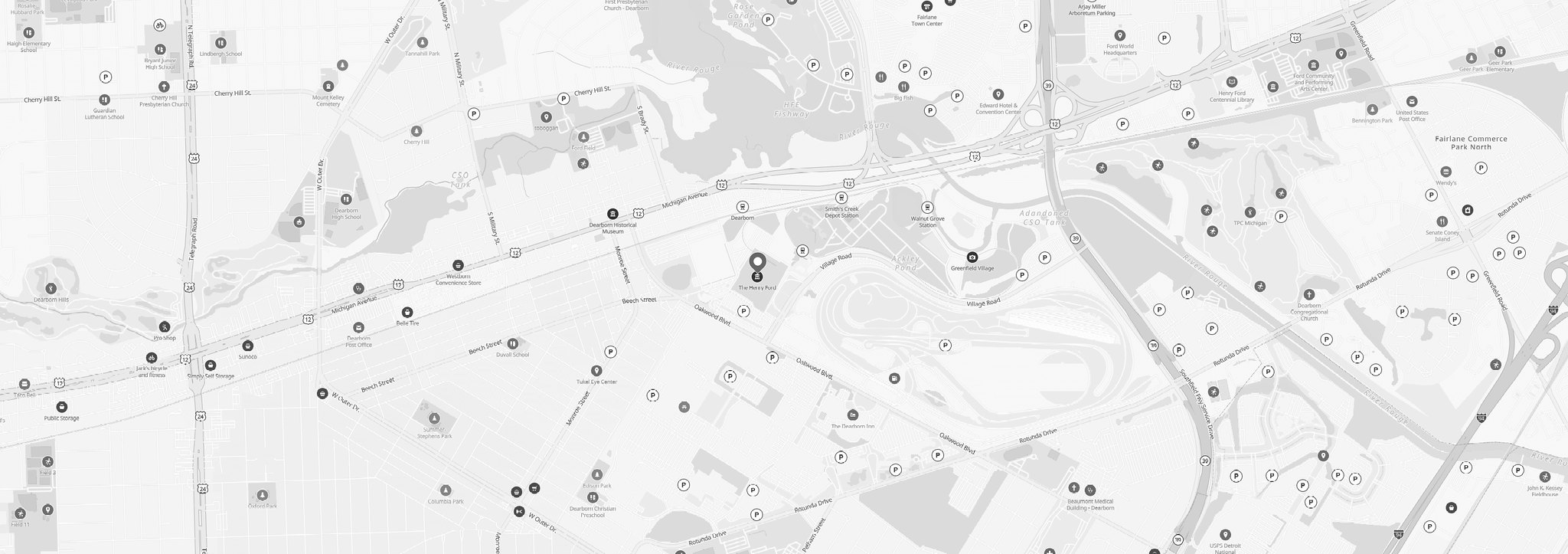This time we (finally) prepared pretty much everything we wanted to see in advance.
However, after such a fun week, we can already say that a week is not enough to explore Michigan. The next time we return (the chances are good), we will go on a round trip.
Michigan was love at first glance (and then, on the second and third, etc.).
7/31/2022
After picking up the car around 10 AM, we drove to the nearby city of Dearborn. This is 13-15 minutes from the airport and a few miles west of Detroit. It is practically a suburb of Detroit.
From there, we wanted to visit another city on the way to Traverse City. However, there is so much to see in Dearborn that time ran away right at the beginning.
I think the name Henry Ford and the famous Model T seem familiar to many.
The Henry Ford Museum of American Innovation®, a historical museum complex, is located in Dearborn. It is the largest indoor-outdoor museum complex in the United States, with more than 1.7 million visitors per year.
There are several admission combinations, and we opted for the combined ticket for the museum and village, which cost us $111.
The museum itself is really a huge building. 48,600 m² exhibition hall.
The ticket is simply scanned at the entrance, and you can enter.
You are in such a large room that you can't even decide where to go. There is help at the entrance. A man stands there, and we asked him what he suggests.
So we followed the direction he said.
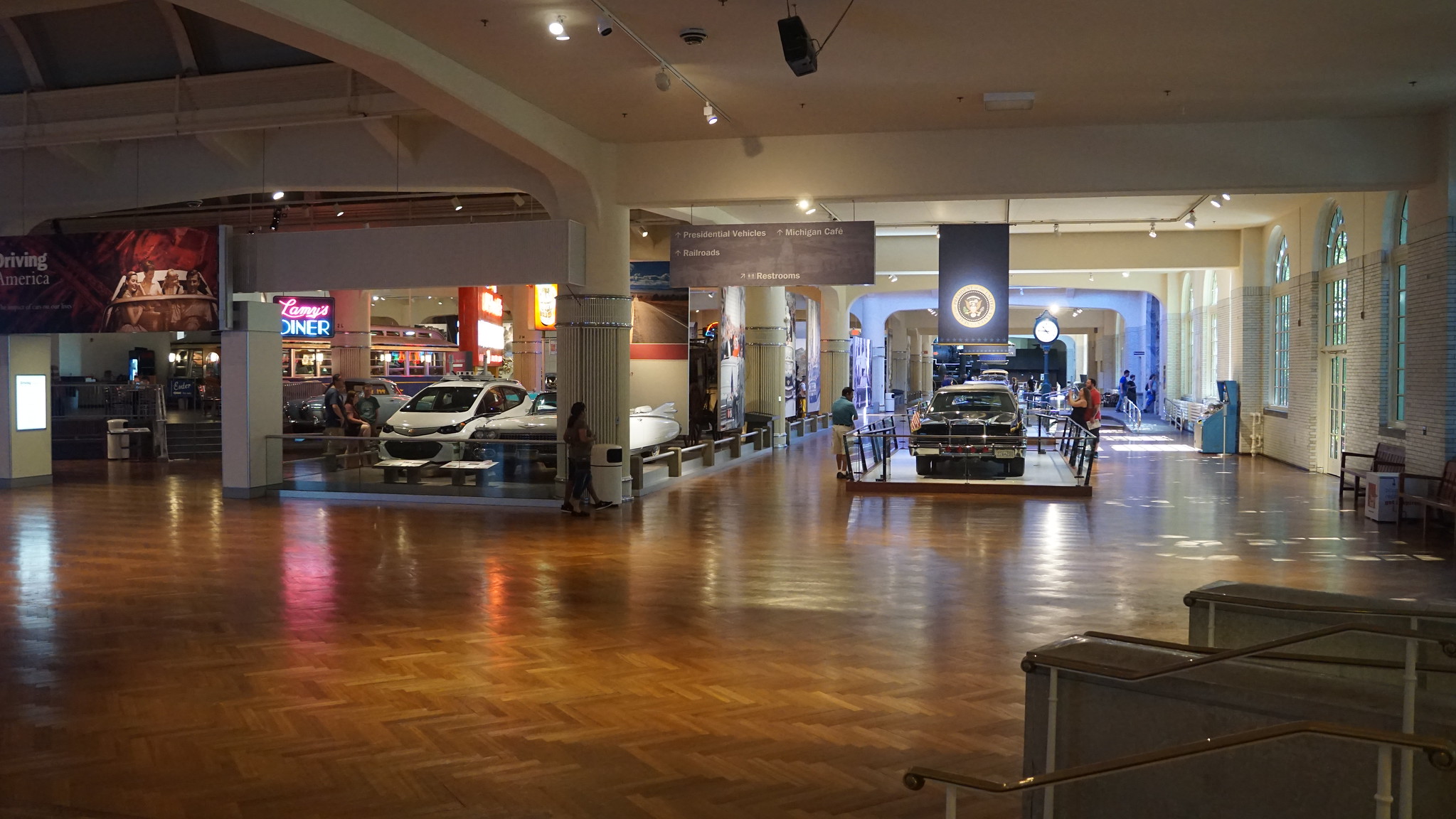
So what is there to see here?
President limousines, railways, American car driving, car racing, aviation, American inventions, furniture, agricultural machines, human rights, mathematics, and a whole range of other things and topics.
It is a world in which past innovations inspire the imagination of future generations. The exhibitions present things and historical events that inspire and stimulate thought. We can get to know the stories of people who have paved the way to where we are today.
It is a vast, very demanding museum. We "ran" here for several hours, relatively quickly compared to our own pace, because we wanted to follow our original plan to go to other places at that time.

There are many exciting things to see and learn among the many things we would like to highlight, some that we particularly liked or because they are essential.
First, we went to the presidential cars. Here are President Reagan's limousine and the vehicle in which President Kennedy was shot.
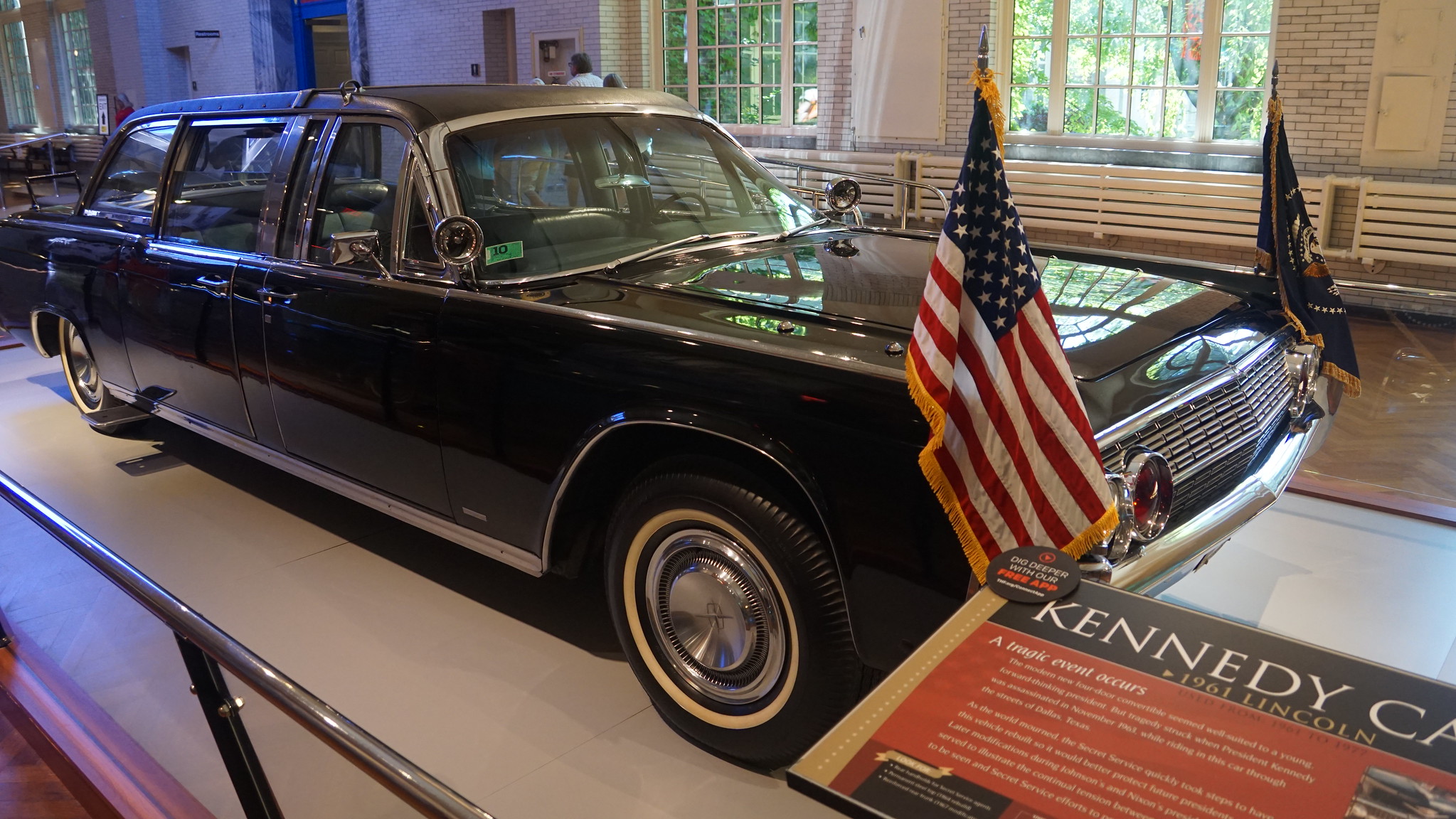
The railway exhibition comes after limousines. There is a massive area with a model railway and a series of trains, including a presidential train. We have already been to a transportation museum here in North Carolina, where we saw a variety of locomotives. But never a Canadian snow plow. Among the trains, this was perhaps the most interesting for us.

"Driving America" presents the development of cars and associated innovations from 1865 to 2002. Of course, not only cars but also everything else about driving: accommodations (tent, caravan, motel), petrol stations, restaurants, safety solutions (e.g., child seats).

The first Model T ran off the assembly line in 1908 and cost $850. Ford doubled his workers' wages so that they could buy it. The car was a great success because 15 million Americans bought a car over the next 19 years. So America's love for cars was practically born.

The basis for the unprecedented success of the car lies in its simplicity and practicality. In 1914, Ford produced more cars than all other car manufacturers.
The last Model T from 1927, the 15 millionth, is in Greenfield Village.
It also houses the first convertible Mustang from 1965.

The baby boom generation grew up after the Second World War, and more people visited college than ever before. Ford market research has clearly shown that consumers buy a car at a much higher price with a university degree. In 1962, almost half of the new cars were bought by people with a university degree, even though they only made up a fifth of the total population. In addition, several American families wanted to add a second car to their garage.
To meet this market demand, Ford started working on a new car. This became the Mustang. The concept car Mustang I Roadster was completed in 1962.
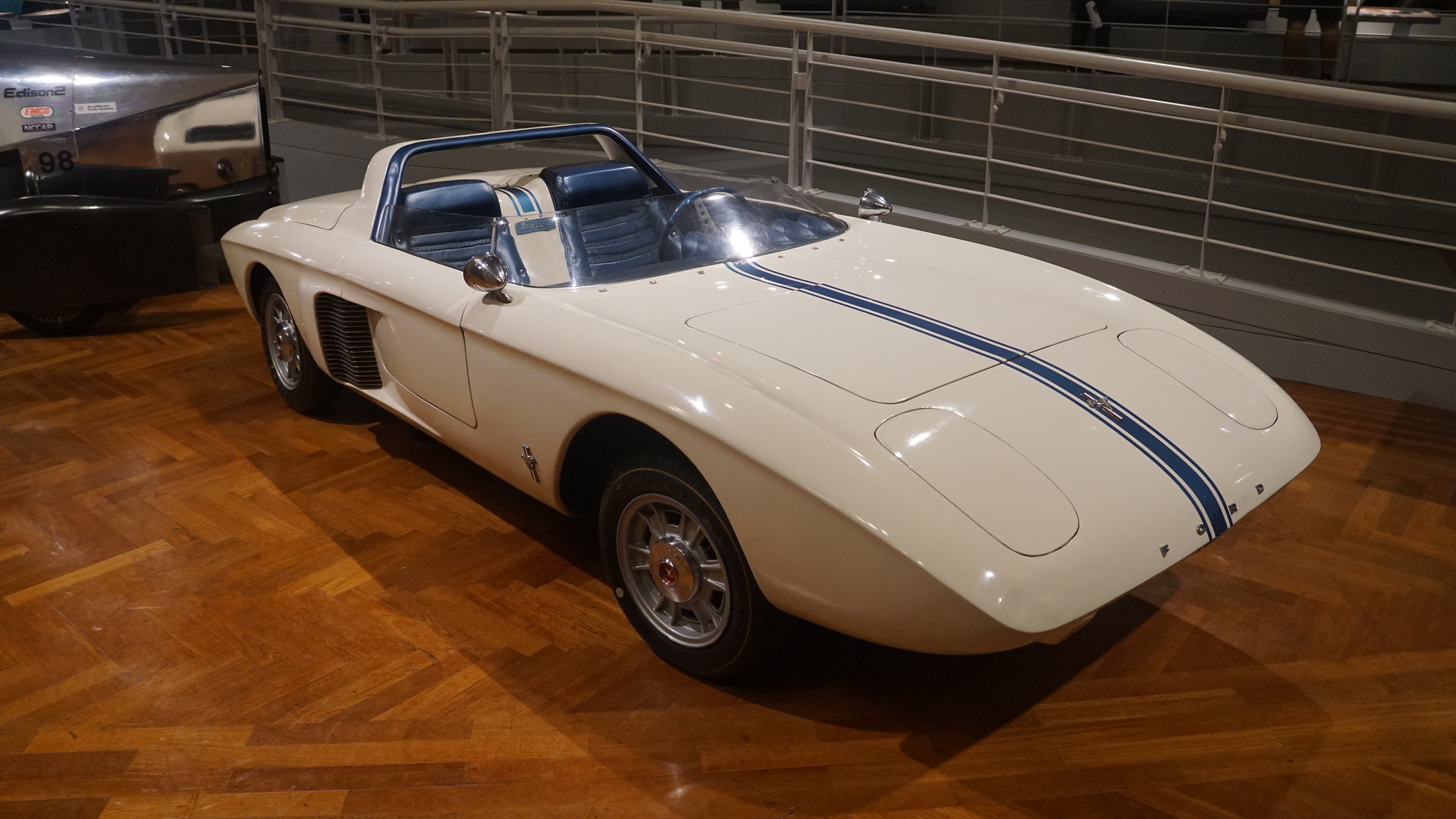
Mustang II was born from the further development of this in 1963. The first serial roll-off car was presented in April 1964. They sold 100,000 cars in the first four months and almost 500,000 in the first year.
The Mustang is the oldest Ford model that is still being produced today.
We also have a Mustang, so that's interesting for us too! 🐎
We also saw some racing cars. The development is enormous. And in such a short time, when you think about it. In 1965, in the year of the first convertible Mustang, Goldenrod set the speed record for 25 years. The car's top speed reached 409 MPH (~658 km/h)!
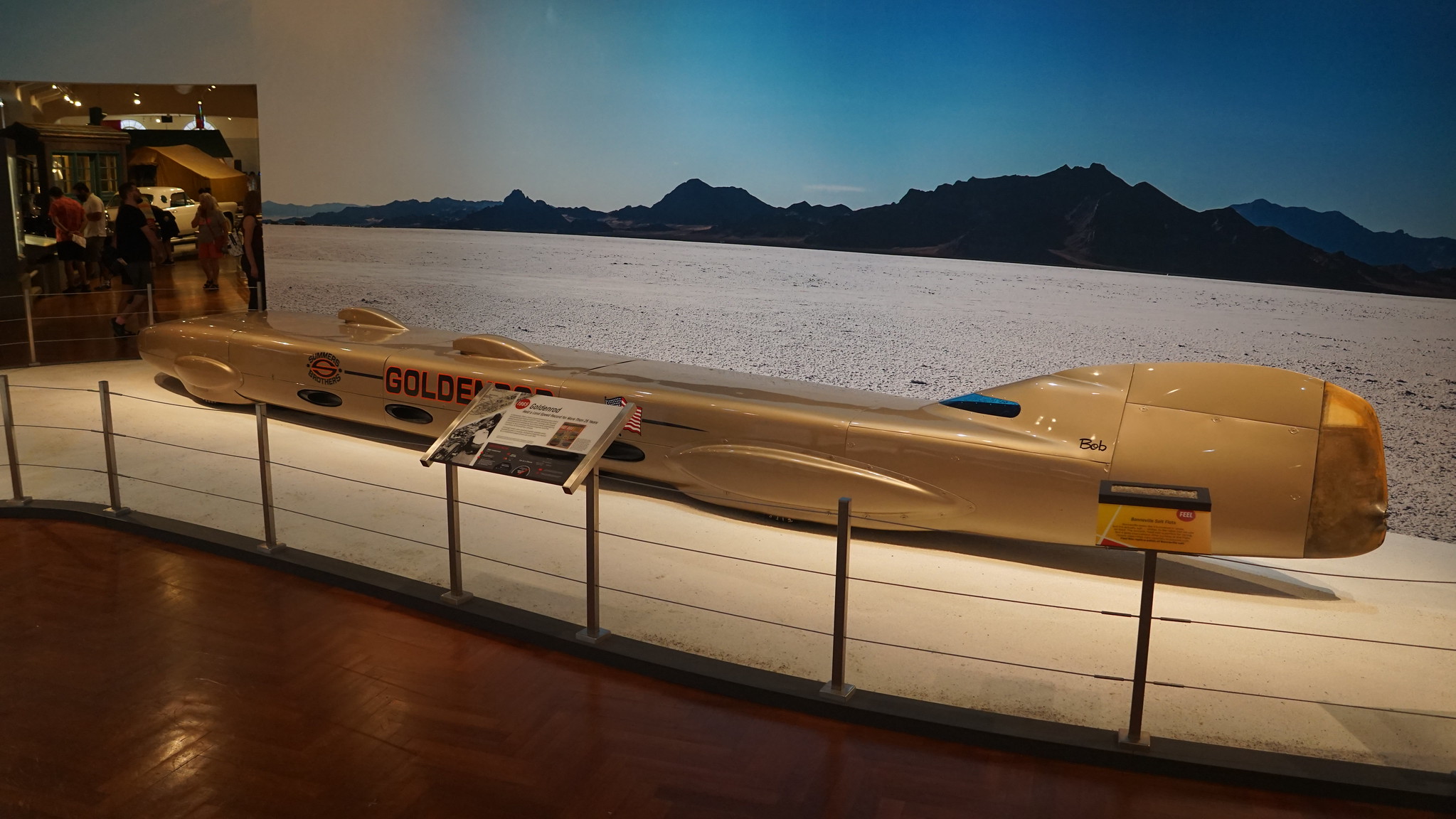
We have a passion for aircraft. Impressive vehicles. We have already been to the Carolina aviation museum in Charlotte (we can't wait for it to be reopened next year). And we were also in the Outer Banks, where the Wright brothers completed the world's first flight.
Here in this museum, you will find other fascinating aircraft. There are some, where you can take a look and have a seat. For example, an early aircraft has real chairs as seats. No seats like today.

These previous versions seem to be much more comfortable than the current.
But there is also a three-engine Fokker F.VII aircraft, with which the explorer Richard Byrd and the pilot Floyd Bennett flew to the North Pole on May 9, 1926.
I don't even know what is more astonishing, that an aircraft could land at the North Pole or that it was already in 1926! It's almost incredible!

Anyway, this place is not only interesting for men, I was also mesmerized watching these vehicle wonders.
And that is far from the end of the museum because there are more areas to be discovered.
The following exhibition shows the development of human rights and freedoms. That was the most interesting for me anyway. This exhibition focuses on four main phases of American striving for freedom: the revolutionary period, the anti-Sklaveri movement and the civil war, the right to vote for women, and the civil rights movement.
We would like to highlight some of the most important sights here:
Engraved copy of the 1776 Declaration of Independence. This is one of 200 copies that John Adams ordered in 1820. (John Adams is the first Vice President and Second President of the United States, one of the founding fathers of the United States.)
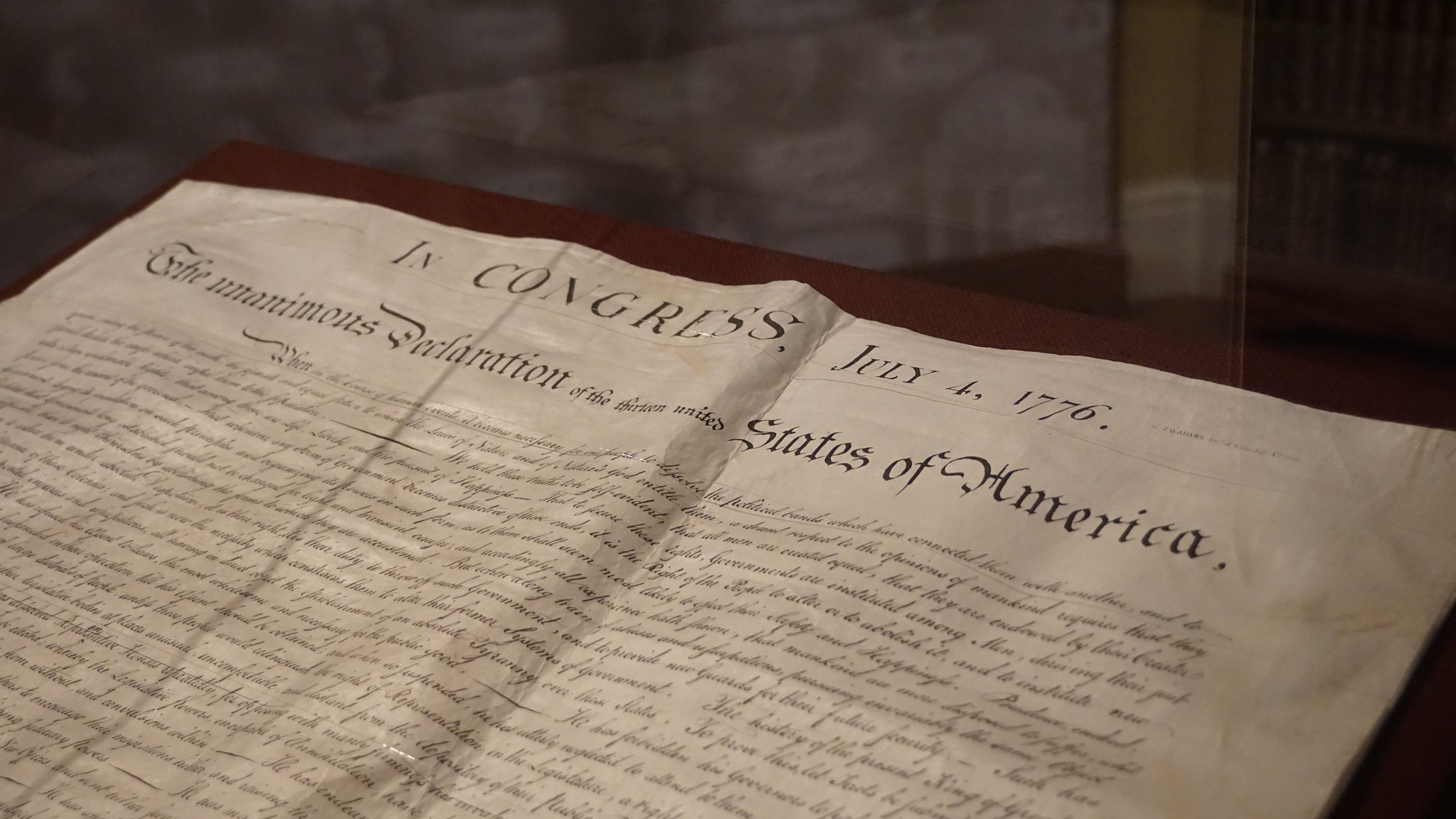
Field bed by George Washington - 1775-1780
George Washington took a folding bed, tents, and other equipment when he camped with his troops on the battlefield during the American Revolutionary War.
He probably used this bed when he left his headquarters in July 1783 to travel to the upper part of New York State and the military facilities there.
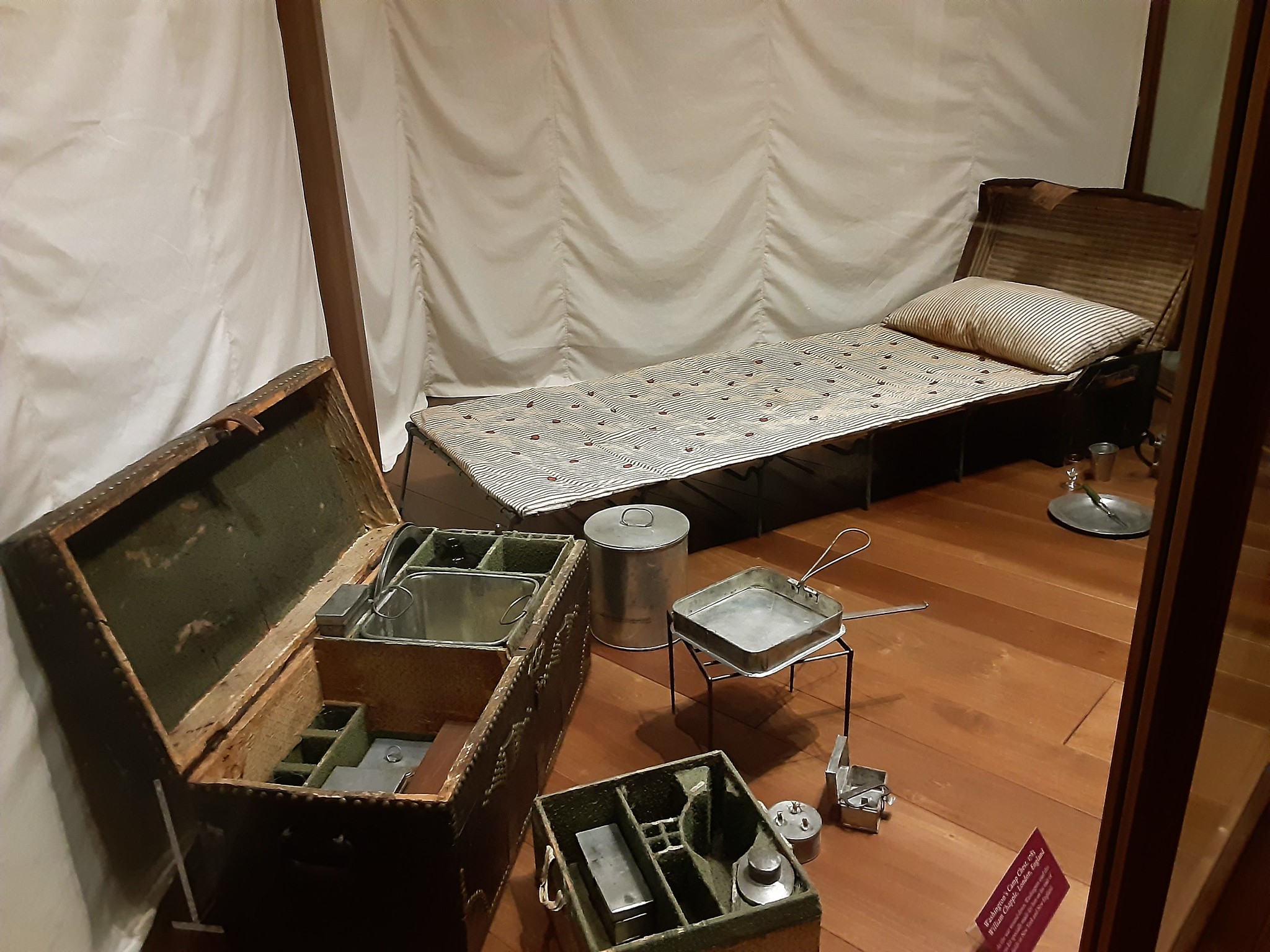
Rocking chair of Abraham Lincoln
He was sitting in this chair in the Ford's Theater in Washington, D.C. when he was murdered on April 14, 1865. Henry Ford bought the chair in 1929 for the museum.
"Whites Only" Drinking Fountain
For me, this was the most thoughtful and saddest thing I've ever seen. From the late 19th to the middle of the 20th century, the racial separation laws separated African Americans in the southern states and White in almost all areas of public life. From railway wagons to schools to toilets - or, as the title already says, even at the drinking fountain. Actually, separate but equivalent facilities should have been created. In reality, however, they were never the same! This drinking fountain dates from 1954!

Rosa Parks Bus
This is the bus from which the civil rights movement actually started. This is a renovated version of the original bus.
It happened in Montgomery, Alabama. According to the segregation laws, Whites and African-American passengers had to travel separately in the vehicles. Some seats were only reserved for Whites; usually, the first four rows of seats and Blacks could sit on the back 26 seats. They made up ¾ of the bus passengers. With a movable sign, however, the bus driver could change the border and shift the sign anywhere at the expense of the Blacks. Accordingly, the Blacks had to get up, sit in the back or get out of the bus if necessary.
Blacks were not allowed to sit next to Whites. When there were Whites on the bus, Blacks could get on the front door to buy their tickets. But they couldn't go back between the Whites; they had to get out and get on the back door. The bus often left before they could get on the bus again after buying a ticket. In 1943, Rosa Parks came into conflict with a bus driver named James Blake, who insisted they get off and get on at the back door after buying a ticket. When she got off, the driver started immediately leaving Parks behind. She walked more than 5 miles in the rain but didn't want to get on the bus again.
On December 1, 1955, she boarded the Cleveland Avenue bus downtown Montgomery after work. She paid and sat in the first row of back seats reserved for Blacks in the "colored" section. (Incidentally, the bus driver was the same who left her in the rain in 1943.) When the bus traveled along its regular route, the places for white reserved places slowly filled up. Other White ones got on at the third stop, then Blake told the four Blacks sitting there to give up their seats. At first, nobody moved, then three stood up from their seats, but Rosa parks stayed seated.

The driver then called the police, and Rosa Parks was arrested due to the violation of the law, although they were actually not in the Whites' section.
The process took only 30 minutes, and she was released on the same day. Still, there was an enormous buoyancy for the African Americans. They agreed that the abolition of segregation on the buses could be achieved with a one-day bus boycott.
The next day it rained, but the black community really didn't get on the bus. They drove each other by car or took a Black operated cabs that cost as much as a bus ticket, 10 cents. Almost 40,000 black commuters went on foot, some even 20 miles!
The boycott lasted a total of 381 days (!). The bus company initially increased ticket prices from 10 cents to 15 cents, but this did not help because it was still on the verge of bankruptcy. Finally, they managed to abolish the racial segregation law.
Rosa Parks drew attention to the African Americans' struggle for equality and civil rights struggles. Martin Luther King wrote in one of his books:
Nobody can understand what Mrs. Parks did without understanding it: The mug of patience is over at some point, and the human soul cries: "I can no longer stand it!"
Incidentally, only two American presidents visited this place (we do not mean the museum, but especially the bus). One was George Bush Sr., and the other was President Obama. I don't think the latter's importance has to be discussed much!
For us, this whole story is exceptionally thoughtful and inspiring at the same time. If you think about it, it all happened not too long ago, which I find very sad! At the same time, it is hopeful that there were people, and there will always be people who work for a good or necessary thing.
We find it very good and essential to use this attitude and cooperation today!!! Real cohesion is when people stand up for a good cause and achieve something with combined forces! This is the only way we could get ahead! Practically, so much happens around us in many areas of life that we really need such a boycott!
Unfortunately, we don't learn much about it in history lessons, although it is an important topic.

I recently read the book Kill a Mockingbird by Harper Lee. It was released in 1960 and became a classic of modern American literature. His primary topic is racial justice and the death of innocence. It is widespread reading in English-speaking countries, and although there were many attempts to cut it out of the curriculum… I would make it everywhere.
American librarians chose him as the best novel of the 20th century.
History played in a small town in the south in the 1930s.
Here Jean Louise Finch lives with her older brother Jem and her father, Atticus. Only JEM and later Jean Louise lose their childlike innocence more and more to be able to face the true face of the world.
The father of the children, Atticus Finch, is a lawyer and takes over the defense of a black man in court who is accused of raping a white woman.
I will not tell the story in detail, only if someone wants to read it. An excellent book and I can only recommend it.
Well, back to the museum: The American women's voting rights movement is also fascinating!
A film entitled Iron Jawed Angels was made on this topic. We put it on the list of movies to be seen. We couldn't see it because it can be streamed on HBO, which we do not have currently.
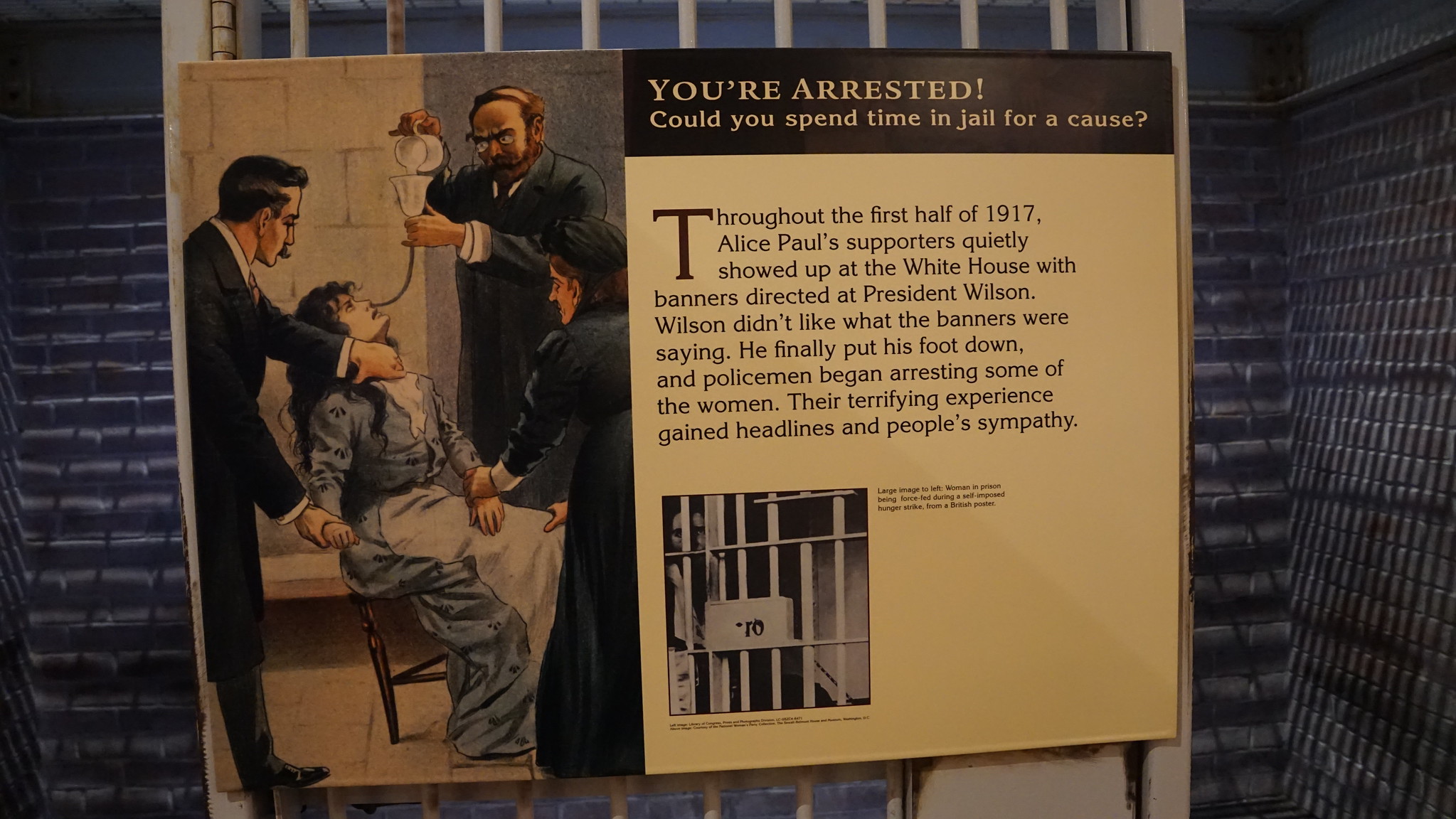
But the other museum exhibitions also give an insight into the development history of agricultural machinery; for example, you can see what a kitchen looked like in the early 1930s or earlier. You can also see many different pieces of furniture, chandeliers, and other furnishings from contemporary America.
You can see clothes that show what was worn at the time, huge doll houses, heating and cooling devices, and even a television.
The mathematics department is also worth mentioning: this is really very interesting!
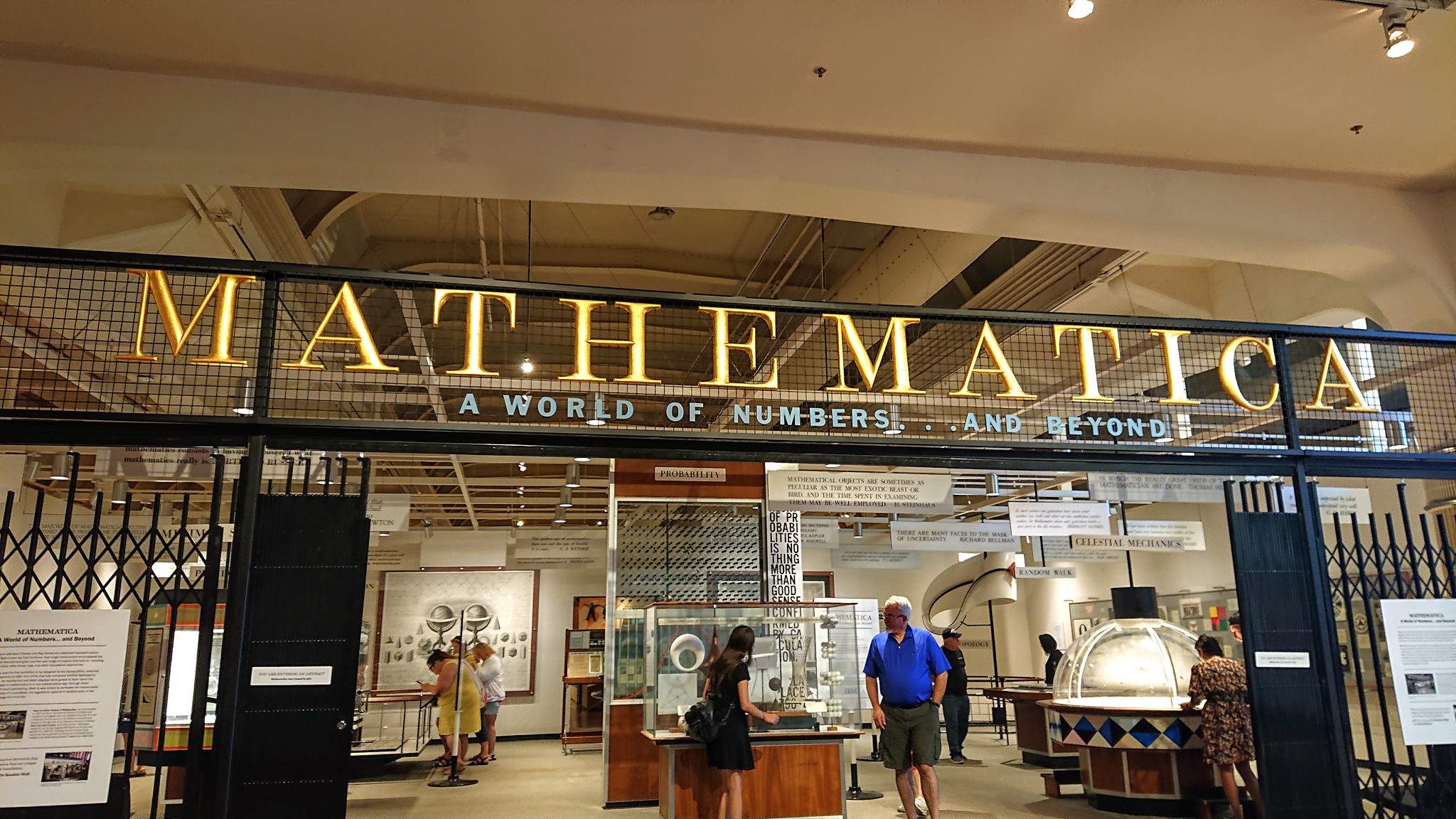
Now that we looked at everything here, it was already clear that the second station (Frankenmuth) would definitely fail.
We first looked at the museum, and there is still the village. The Automotive Hall of Fame is in front of this museum, but we failed already because it is only open until 4 PM. We didn't even mention a word about Ford's house. So there were still plenty of programs.
But since we had been walking around in the museum for hours (and I suspect that we haven't seen everything), we decided that we eat something.
We had breakfast at the airport and got a few cookies on the plane that we hadn't even eaten, so there was time for lunch.
There are three restaurants on the museum site: Plum Market Kitchen, Michigan Café, and Lamy's Diner.
We looked at the Michigan Café, but unfortunately, it was closed. We chose Lamy's Diner, which is very interesting because it is an authentic and typical American diner.

Clovis Lamy served in the armed forces during the Second World War and dreamed of founding a company. After the war, he decided to buy this restaurant.
Lamy's Diner was originally in Marlborough, Massachusetts. The restaurant moved several times until it finally moved to the Henry Ford Museum in 1984. The menu includes modern menus, and the counter and other devices look iconic. There are miniature jukeboxes on the tables (which probably don't work anyway). Still, it gives the place a very charming atmosphere.
After lunch, we collected some energy to go to Greenfield Village. If you leave the museum building, you must cross a small place where the tickets are checked, and the journey through time can begin. But more about that in the next post.
Stay with us; a wonderful journey awaits us!
Additional Photos
